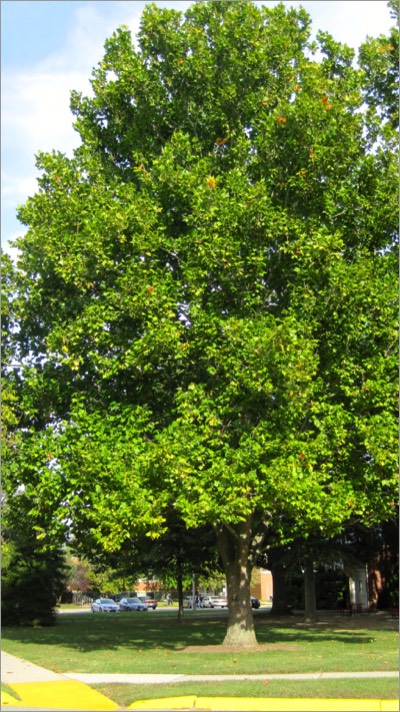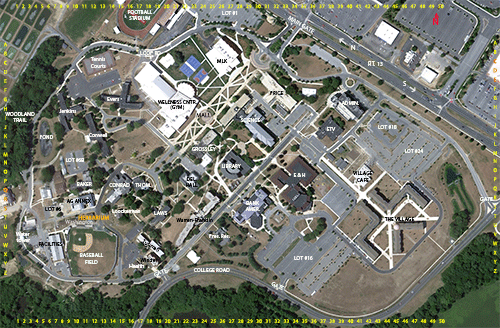American sycamore


Platanus occidentalis
AMERICAN SYCAMORE
Platanaceae
E. North America
Location: map coordinates P-19 (near northwest corner of Delaware Hall), N 39°11'8'' W 75°32'37''
Planting history: presently unknown.
Description:
Native species, State Rank S5 (very common in Delaware)
AMERICAN SYCAMORE
Platanaceae
E. North America
Location: map coordinates P-19 (near northwest corner of Delaware Hall), N 39°11'8'' W 75°32'37''
Planting history: presently unknown.
Description:
- large deciduous tree
- etymology: Platanus from the Greek name for a species of plane tree (platanos) for the flat leaves; occidentalis = western
- also known as buttonwood
- leaves 3-5 lobed, with large teeth; leaf base covers bud
- monoecious (separate male and female flowers on same tree); flowers small, clustered in round unisexual balls
- fruits round “buttonballs”, dangling; always single (not in 2’s); fall apart at maturity; seeds eaten by only a few wildlife species like purple finch
- bark very recognizable; falls off in large plates leaving a camouflage-like appearance; underbark pale greenish-grey to almost white, whitish-yellowish
- most massive tree of the eastern USA; Indians used trunks for canoes
- resembles the hybrid London plane (Platanus ×acerifolia), but American sycamore fruits are all single (none in 2’s), inner bark color is more white (less yellowish/greenish), and much more susceptible to anthracnose in springtime
- native habitat floodplains, swamps, woods
- major host of the native sycamore lace bug (Corythucha ciliata)
Native species, State Rank S5 (very common in Delaware)


HIT REFRESH TO START LOCATION GRAPHIC